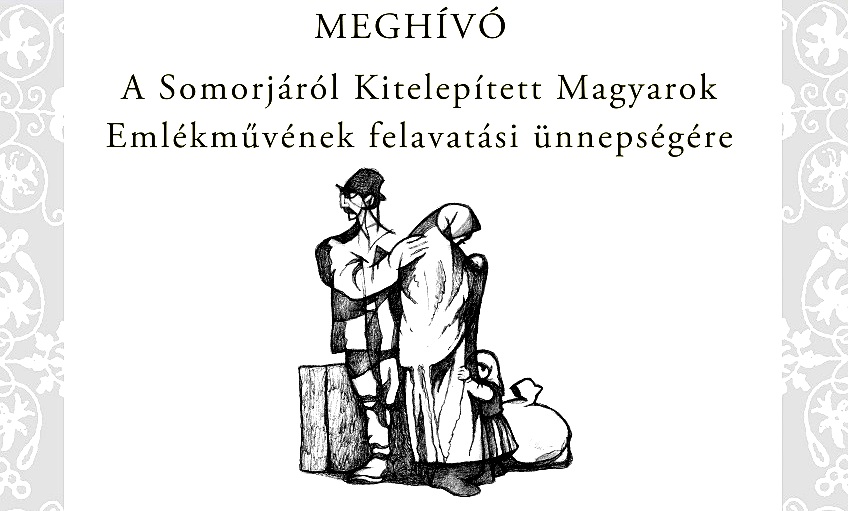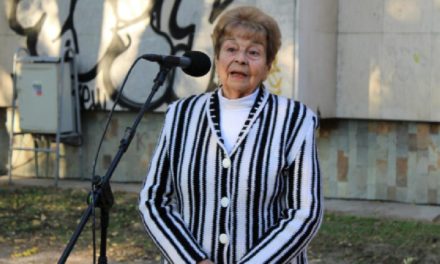On August 2, at 6 p.m., the memorial to the Hungarians displaced from Somorja will be inaugurated, which was located at the intersection of Fő utca and Gazda sor, opposite the Szent Damjan and Szent Kozma chapels next to the former hospital building, reports Felvidék.ma.
After almost five years of preparation and a ban on gatherings caused by the virus situation, the memorial to the Hungarians displaced from Somorja will be completed this week and is awaiting inauguration. The Via Nova Somorja Youth Group, in cooperation with several civil organizations from Somorja, started a collection in 2017 in order to commemorate the Hungarians who were displaced from Somorja. The goal of the Somorja branch of the youth organization of the Hungarian Community Party was to achieve a kind of social solidarity, and to prevent this initiative from being accused of being the arbitrary action of a few people , such as the Via Nova Somorja, the Csemadok Somorja, the Somorja Hangja, the Hungarian Civic Circle and Vest Music & Culture joined forces with the citizens of Somorja, public figures and the city of Somorja in this matter...
...It is important to note that, just as in the case of Somorja, we do not know exactly how many residents were evicted from the city. It is not known, for example, how many people were taken from Somorja to forced labor, nor how many people had to leave their homes before 1947. What is certain is that in February 1947, four transports were launched from Somorja to the Czech Republic.
The list documenting this contains the names of 813 residents, most of whom were taken away. In addition to the 161 family heads and 106 able-bodied family members, most of them were so-called "non-working" people, i.e. people unable to work: pregnant women, infants, small children, the elderly and the sick. The people to be evacuated were usually loaded onto trucks with their belongings, and then transported to the then-existing Somorjai railway station or directly to the Üzor station located on the main railway line.
From there, they traveled on to their destination in unheated cattle wagons. Most people were taken to Frýdek-Místek (413 people) and Nový Jičín (344 people), and a few dozen to Ostrava and Tišnov. Here, the Czech farmers could choose from among them, so that they could then hire them to work in the Sudetenland. The deportations were finally stopped on February 22, 1947 due to increasing international pressure.
However, the disenfranchised Hungarians were only able to regain their citizenship and the rights that come with it after the communist takeover, in October 1948. The majority of those resettled in the Czech Republic in 1947 and 1948 returned home without a permit, and after January 1, 1949, with the officially launched transports. About ten percent of the deported remained in the Czech Republic, and their descendants still live there.
In addition to the deportations to the Czech Republic, the resettlement in Hungary also affected Csallóköz to a great extent, and within that, of course, Somorja as well. The names of almost eight hundred people from Somor were on the list of people designated for population exchange , but only a part of them could be resettled by the time the population exchange action was concluded.

source: Felvidek.ma
The list compiled on the occasion of the fiftieth anniversary of the deportations (1997) names more than 330 mourners who were definitely resettled in Hungary, and also indicates where. Most of them were settled in Szigetbecsé (22 families), Rajká (14 families), Dunabogdány (10 families) and Mosonmagyaróvár (6 families), but Somorjas also moved to more distant settlements, including Kecskemét or Pécs.
The evacuees from Somorja were transported by huge UNRA trucks to the railway station in Úszór, on which their movables were loaded: furniture, animals and crops. Based on the lists of railway transports, it is known that many people left their homeland voluntarily, in addition to those nominated for resettlement. These were mainly the relatives of displaced heads of families who would have been left homeless back home.
In addition, the resettlement in Somorján greatly affected the local Reformed congregation, which consisted exclusively of Hungarian believers, and its leadership. Árpád Parais, the church warden and most of the presbytery were taken away. The population exchange campaign was officially stopped in June 1949.
On August 2, 1945, Czechoslovakian President Edvard Beneš issued his 33rd decree against Hungarians and Germans, which deprived the non-Slavic population living in the country of their citizenship, and which was the starting point for the deportation and resettlement of Hungarians from the highlands .
That is why the organizers decided that the inauguration ceremony of the monument will take place on August 2, preventing the possible next wave of the virus.
The dedication ceremony begins at 6:00 p.m. with an ecumenical service in the local Reformed church, and then the participants walk over to the monument, where the program continues with the inauguration of the monument at approximately 7:00 p.m.
The speaker of the event László Kövér , the President of the Parliament. The band Pósfa will participate.
Source: Felvidék.ma
(Cover image source: Felvidék.ma)












